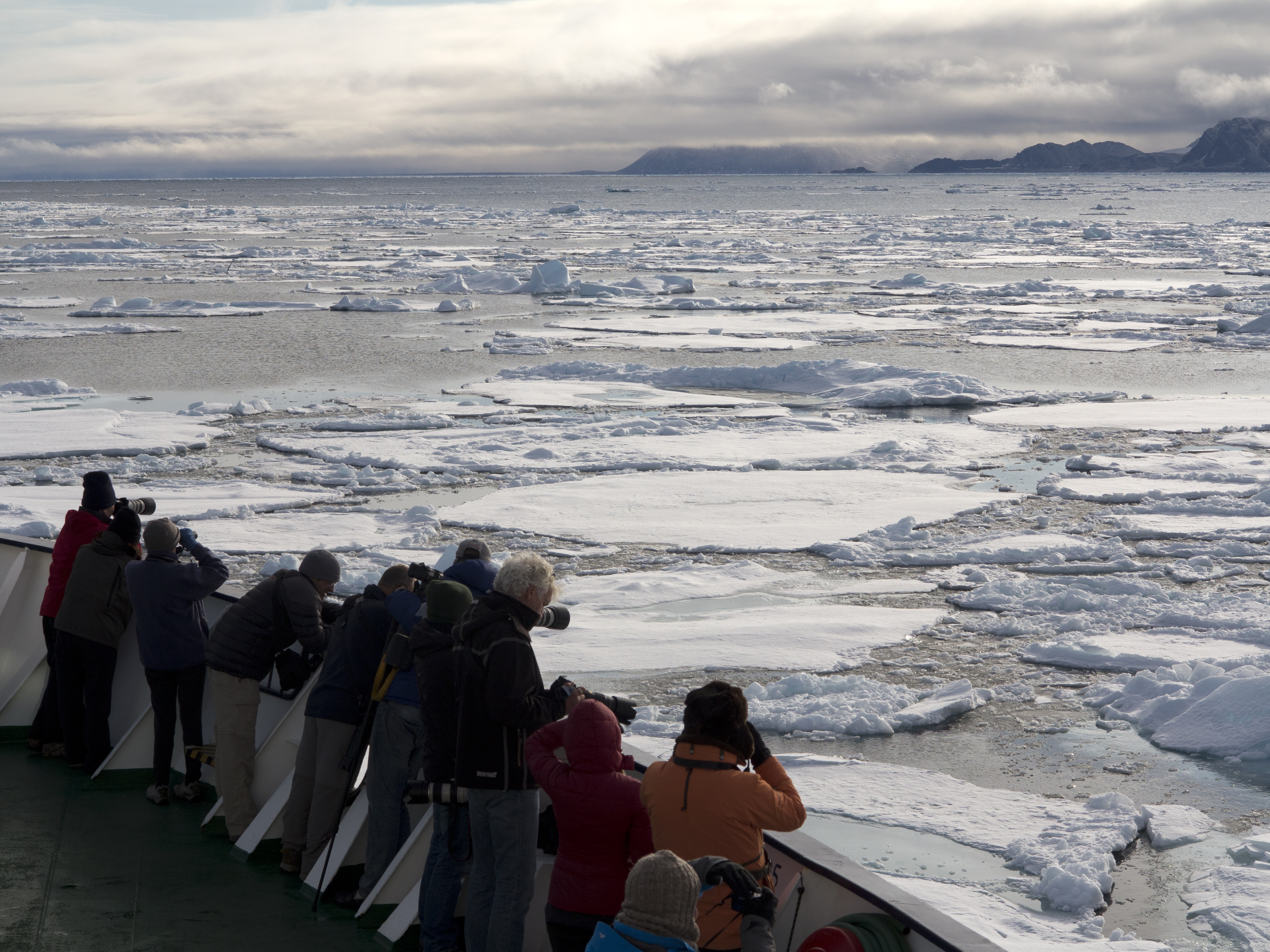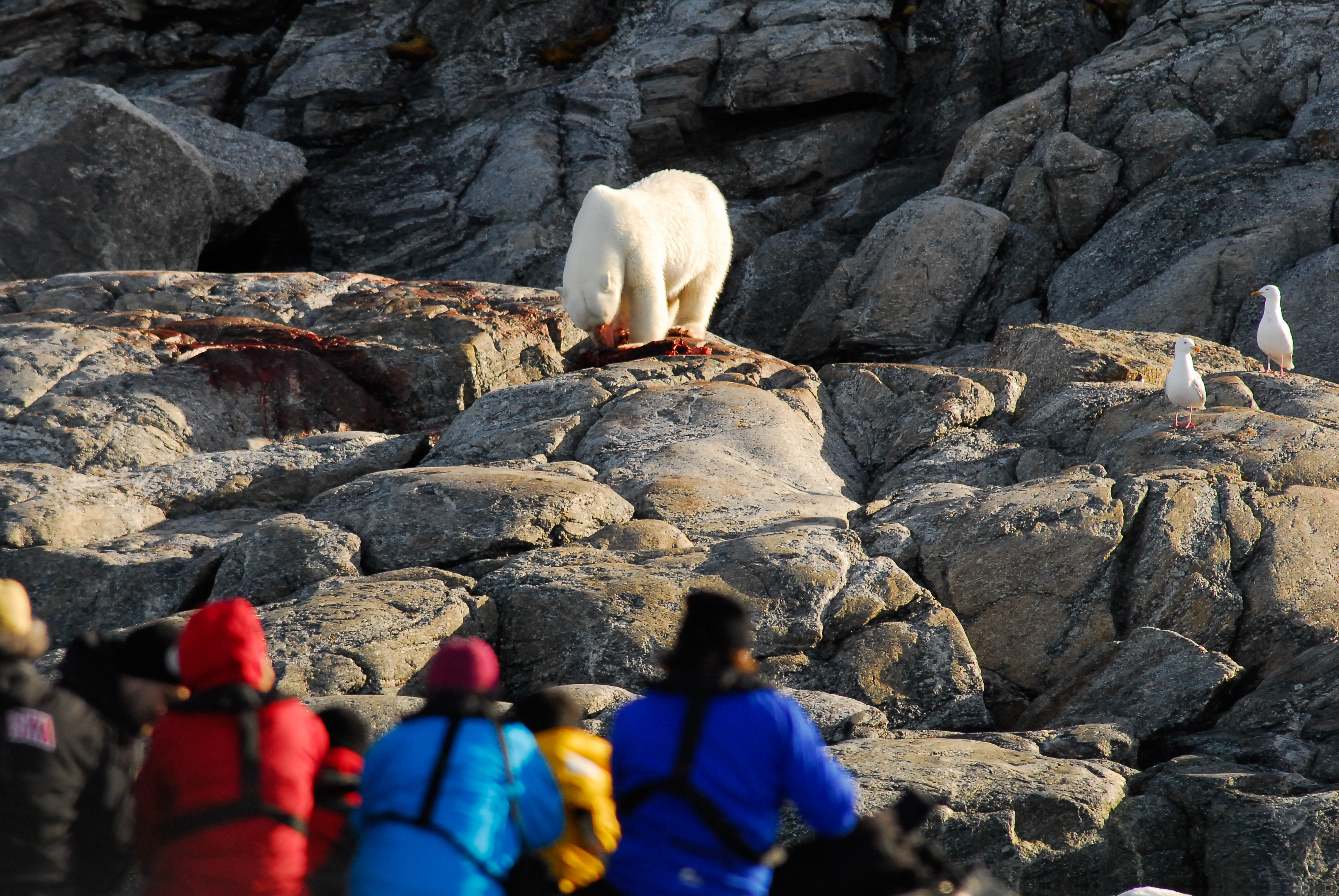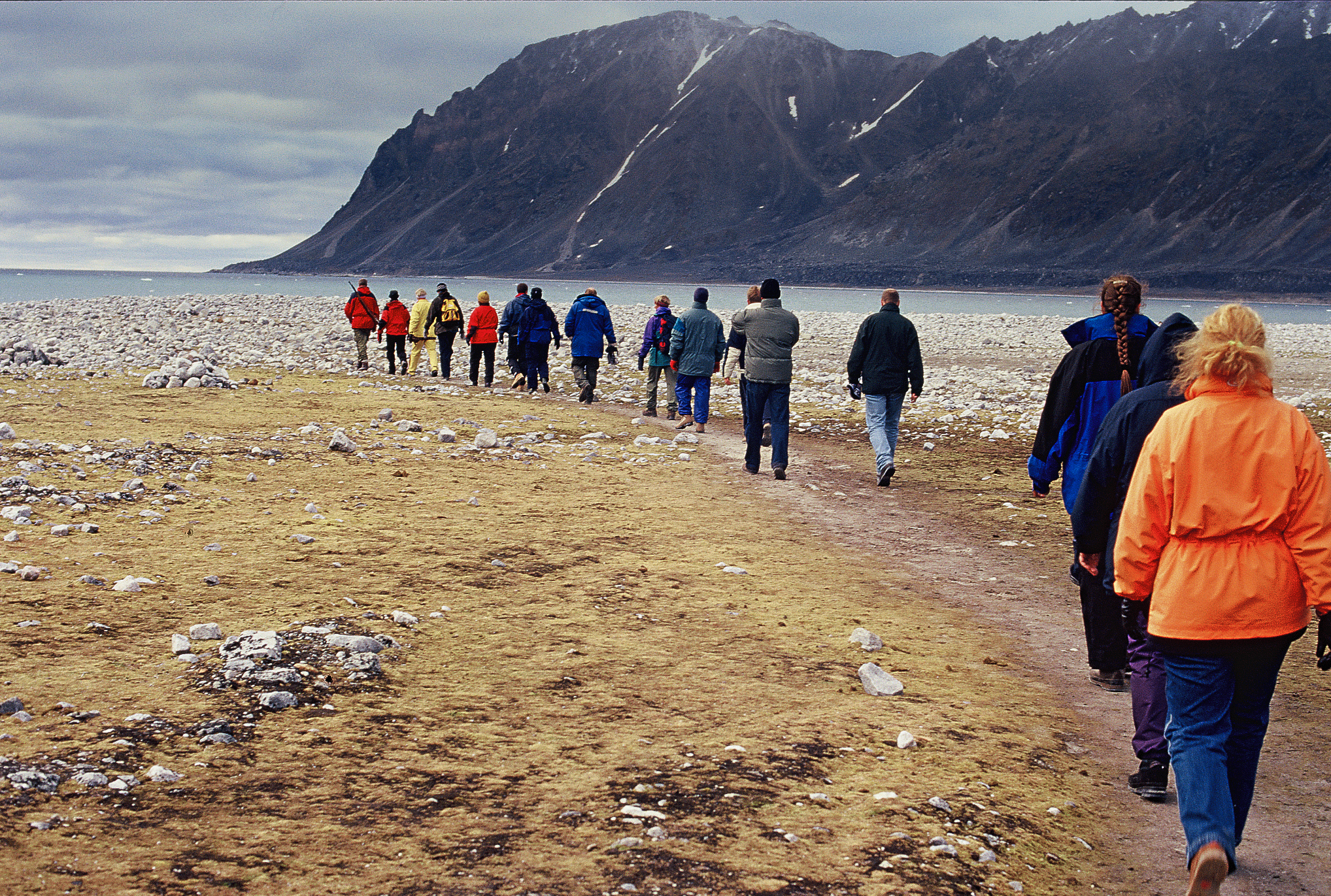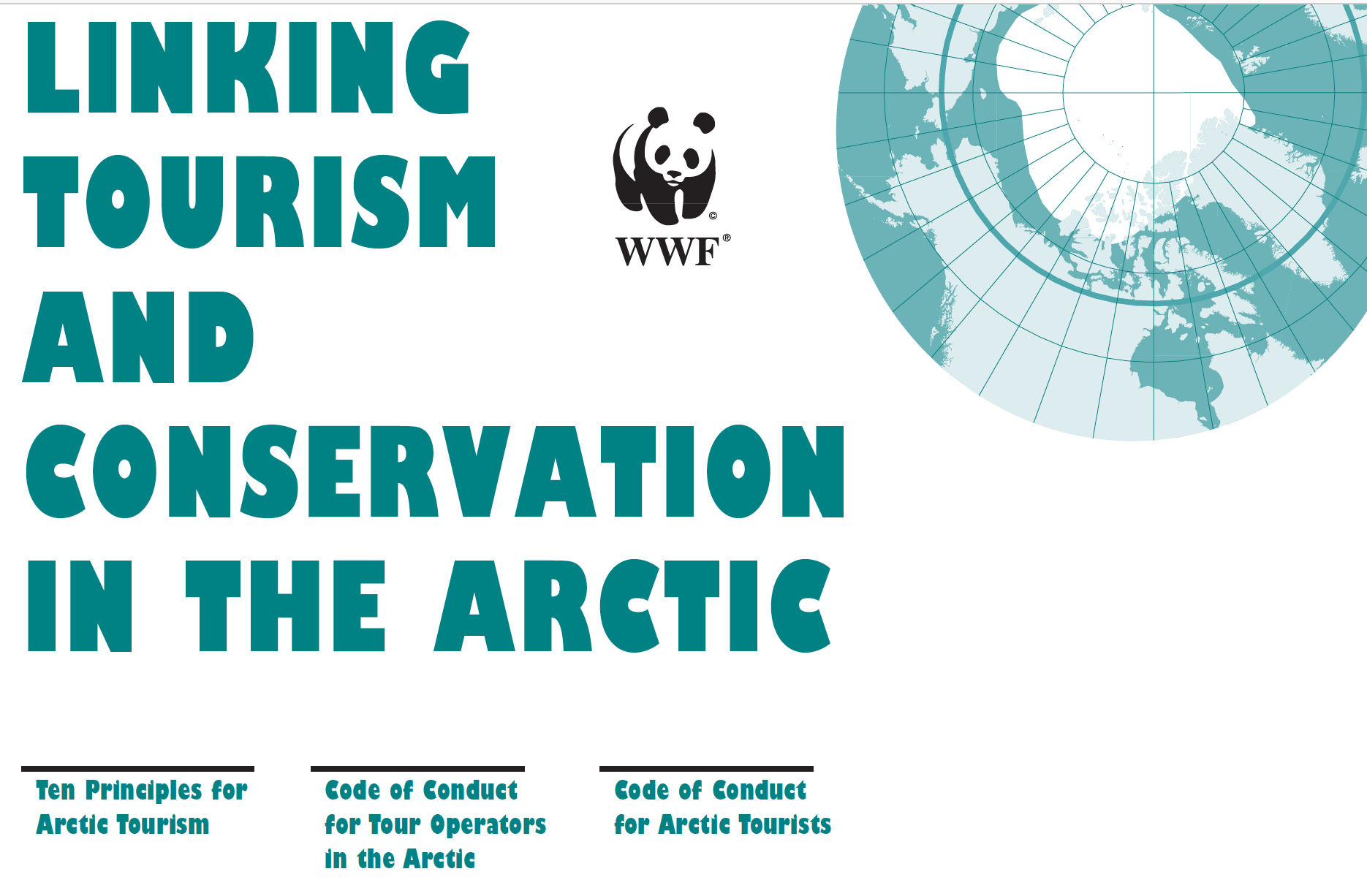 If you plan to visit the Arctic (e.g. by participating in an LT&C-Study Tour) you should be aware of some informative guidelines. One was already produced in the 1990s by WWF in cooperation with Arctic tour operators and were called “Linking Tourism and Conservation in the Arctic”. They, in fact, relate to the origin of LT&C. Today you find even site-specific instructions and wildlife guidelines, supported by the Svalbard Environmental Protection Fund and produced by the Association of Arctic Expedition Cruise Operators (AECO).
If you plan to visit the Arctic (e.g. by participating in an LT&C-Study Tour) you should be aware of some informative guidelines. One was already produced in the 1990s by WWF in cooperation with Arctic tour operators and were called “Linking Tourism and Conservation in the Arctic”. They, in fact, relate to the origin of LT&C. Today you find even site-specific instructions and wildlife guidelines, supported by the Svalbard Environmental Protection Fund and produced by the Association of Arctic Expedition Cruise Operators (AECO).
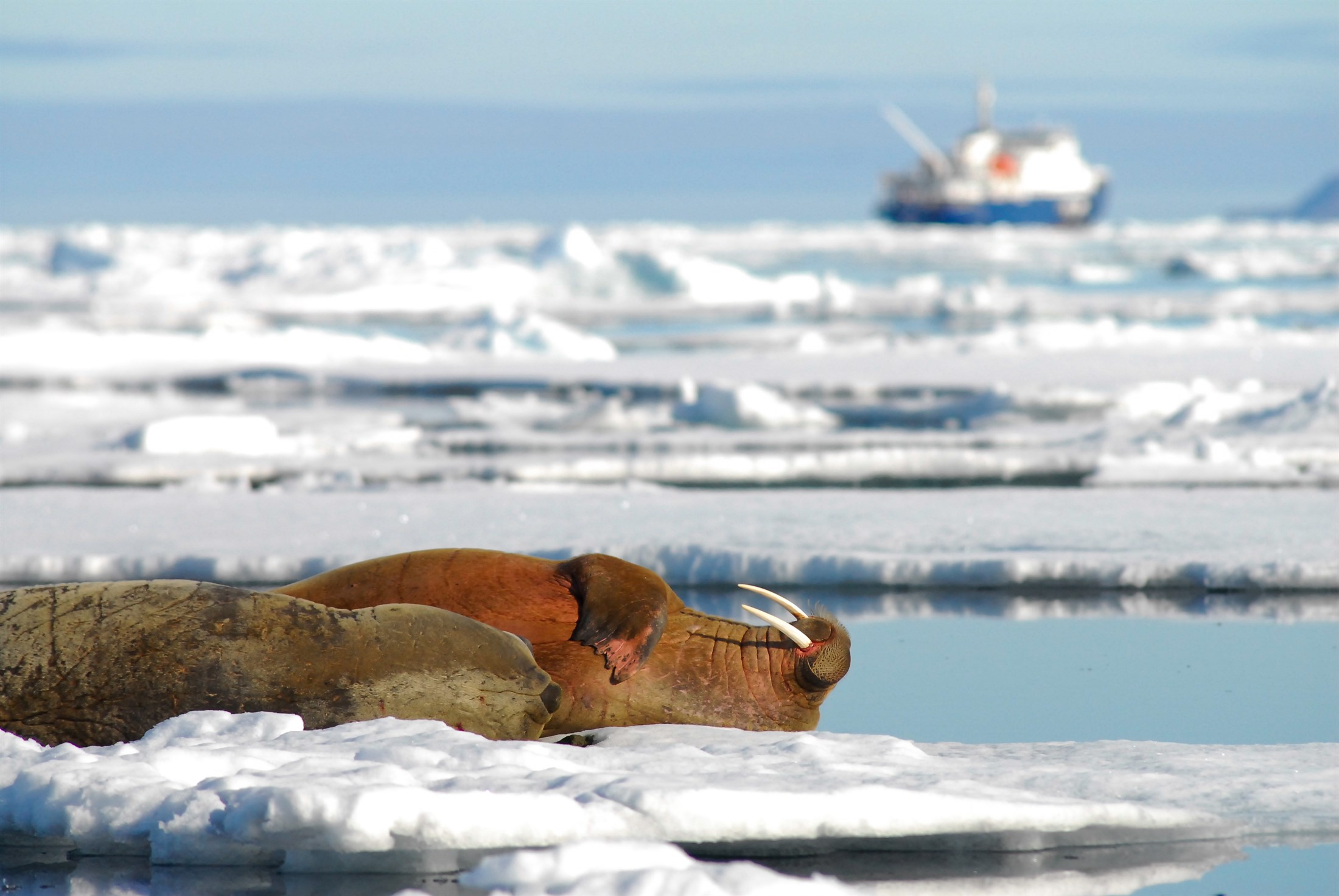 The fruitful cooperation of tour operators and conservation organisations has actually given birth to the LT&C-Example Svalbard. Under the coordination of WWF, a larger group of companies, agencies and experts from both tourism and conservation met several times in workshops on Svalbard and other places and produced a set of Arctic Tourism Guidelines. They were once translated into several languages and distributed in the entire circumpolar Arctic. For a number of years an award, sponsored by the Finnish conservationist and LT&C Founding Member, Heidi Andersson, was given to a tour operator, which demonstrates convincing examples of Linking Tourism and Conservation in the Arctic.
The fruitful cooperation of tour operators and conservation organisations has actually given birth to the LT&C-Example Svalbard. Under the coordination of WWF, a larger group of companies, agencies and experts from both tourism and conservation met several times in workshops on Svalbard and other places and produced a set of Arctic Tourism Guidelines. They were once translated into several languages and distributed in the entire circumpolar Arctic. For a number of years an award, sponsored by the Finnish conservationist and LT&C Founding Member, Heidi Andersson, was given to a tour operator, which demonstrates convincing examples of Linking Tourism and Conservation in the Arctic.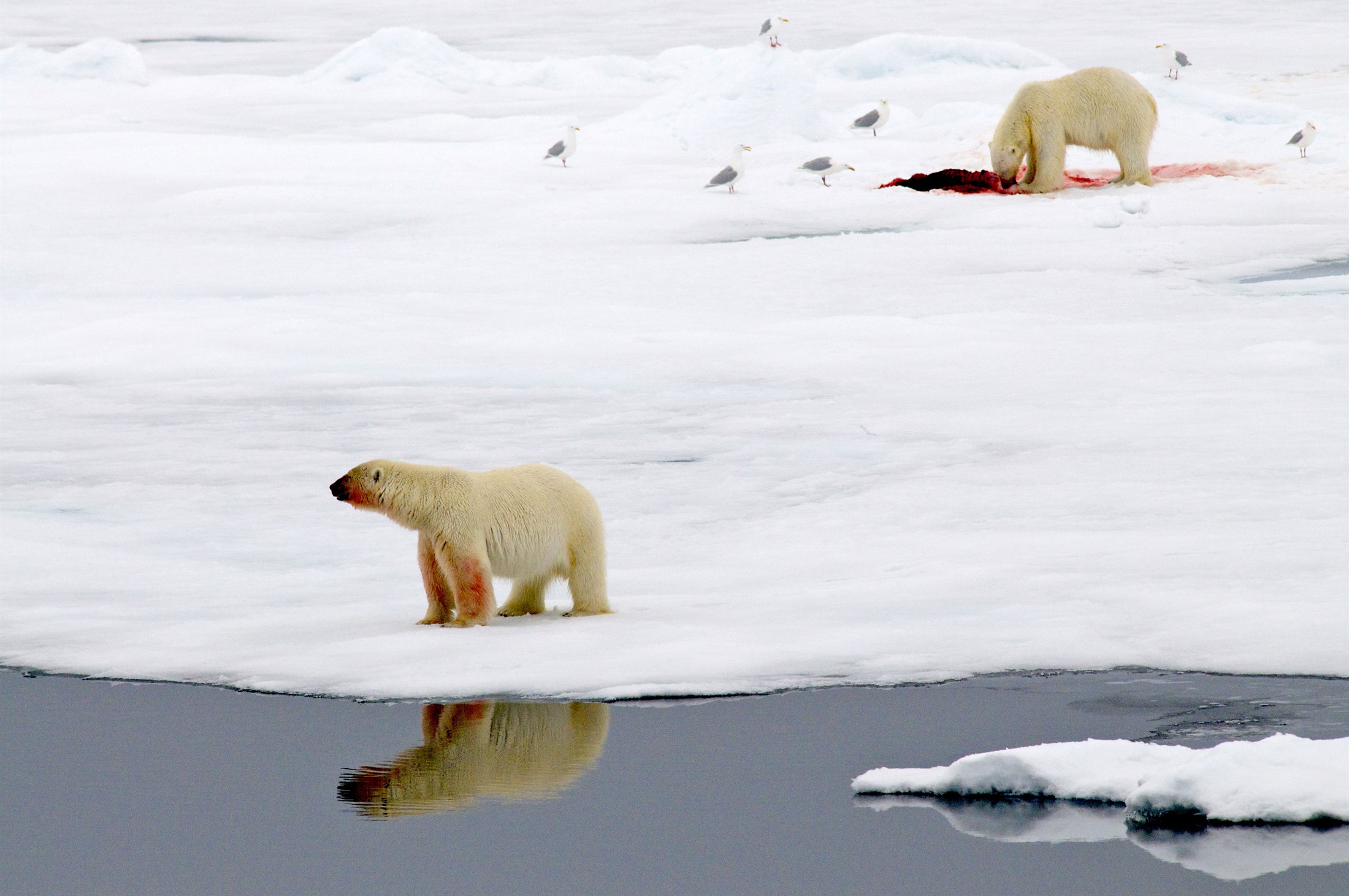
Today AECO has included much of the WWF guidelines into their practises and philosophies. And the Svalbard Environmental Protection Fund, which all visitors to Svalbard support with their entrance fee, is an excellent instrument to manage the protection and visits of the unique High Arctic wilderness.
The archipelago is governed by Norway in the frame of the Svalbard Treaty (originally the Spitsbergen Treaty; signed on the 9th of February 1920 in Paris), where 46 nations of the world are members of.
